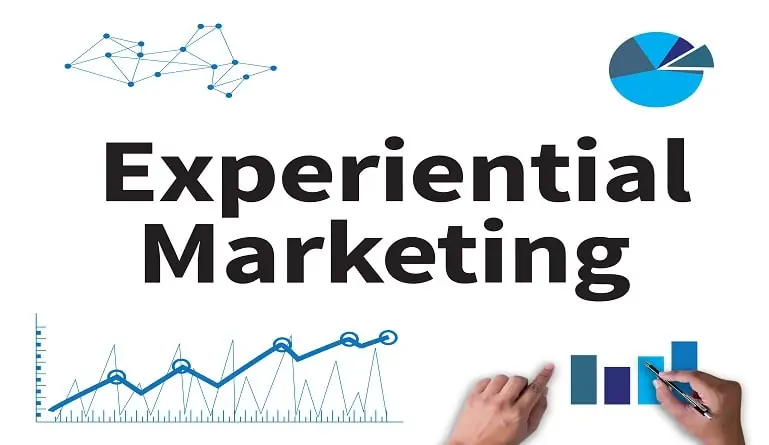Engagement is the currency in the era of experiential marketing strategies – not an option, a requirement. Experiential marketing isn’t just organizing events; it’s a strategic approach to carve memorable and significant bonds with your audience. With over 70% of users becoming regular customers after an experiential marketing event, the potency of this style can’t be ignored.
In this battlefield of customer attention, are you equipped with groundbreaking experiential marketing strategies?
You’re about to be. We’ve curated not just strategies, but the know-how essential for producing result-driven, compelling, in-the-trenches campaigns using experiential marketing. No hocus-pocus, just perceptive and powerful tactics to elevate your brand beyond the cacophony, directly into the hearts of patrons. Let’s shake things up!
How to Implement Effective Experiential Marketing Strategies
Experiential marketing requires a deep understanding of your target audience, creativity to build immersive experiences, and suitable technology to enhance and track these experiences.
Step 1: Understand Your Target Audience
To be successful in experiential marketing, you need to know who your audience is. This involves understanding their interests, preferences, and behaviors. Not only does this help you in crafting experiences that will appeal to them but also enables you to find strategies that align with their needs.
Importance of Knowing Your Audience
Understanding your audience is crucial to experiential marketing. Knowing them allows you to create personalized experiences, which can lead to higher engagement and retention rates. Plus, when you match your marketing efforts with their interests, needs, and behaviors, it increases your chances of having a successful campaign.
How to Gather Audience Data
Data about your audience can be collected from various sources – customer surveys, social media analytics, purchase history, and other digital footprints. This information paints a picture of who your customers are and what they want, enabling you to create effective marketing campaigns.
Step 2: Create an Immersive Experience
Experiential marketing is all about creating memorable experiences that connect your brand with your audience on a more personal level.
The Role of Creativity in Experiential Marketing
Creativity is at the heart of experiential marketing. It’s about thinking outside the box to engage your audience in ways they haven’t experienced before, whether by creating interactive experiences at events or using virtual reality to showcase your products.
Examples of Immersive Experiences
From interactive demos to live performances, experiential marketers have crafted some incredible experiences. These experiences pull consumers into the brand’s world, giving them a taste of the product, service, or mission in a way traditional advertising can’t.
Step 3: Leverage Technology
The successful implementation of experiential marketing strategies often involves harnessing the power of technology.
How Technology Enhances Experiential Marketing
Technology plays a key role in shaping and delivering unforgettable customer experiences in experiential marketing, from augmented reality (AR) and virtual reality (VR) to digital signage and wearable technology. Furthermore, technology helps in capturing real-time feedback and data that enhance the campaign’s effectiveness.
Examples of Technology Use in Experiential Marketing
Many successful experiential marketing campaigns have relied on technology to amaze and engage their audiences. These technologies range from immersive AR and VR experiences to interactive displays and mobile applications.
With these strategies under your belt, you are now prepared to take your experiential marketing campaigns to the next level. Remember, the key to success lies in understanding your audience, creating immersive experiences, and leveraging technology effectively.
Benefits of Experiential Marketing
* Cultivates loyal customer relationships
* Elevates brand visibility
* Stimulates sales growth
Building Stronger Customer Relationships
Experiential marketing serves up a compelling recipe for customer loyalty. Instead of relying solely on traditional advertising, it adds a generous helping of engaging and memorable experiences. Customers form emotional connections with the brand, establishing a sense of trust and mutual understanding that dynamically fuels loyalty. These experiential strategies are particularly successful with younger customers, who are 78% more likely to become loyal to a brand that provides a personal, interactive experience.
It’s the immersive nature of experiential marketing that makes it so effective. By engaging multiple senses, it creates vivid impressions that last far longer than any print ad or televised commercial. Consumers not only remember these experiences but also associate them with the brand, fostering a deep, enduring connection.
Encouraging customer participation is another key ingredient in experiential marketing’s success. When customers are actively involved — such as through interactive installations and hands-on demonstrations — they’re more likely to develop a positive perception of the brand and prolong their relationship with it.
Enhancing Brand Awareness
Experiential marketing plays a pivotal role in brand promotion. It’s the secret seasoning that makes your brand stand out in the crowded market and captivates the audience’s attention.
In today’s hyper-saturated media landscape, experiential marketing breaks through the noise by delivering experiences that are hard to forget. Whether it’s an engaging pop-up store, an immersive virtual reality experience, or a lively street performance, these strategies amplify your brand’s visibility on an exponential scale.
Moreover, experiential campaigns often blend seamlessly with social media, generating hashtags, shares, and ‘likes’ that propel your brand into the digital stratosphere. This marriage of real-world experiences and online engagement spawns a powerful brand awareness strategy that leaves lasting impressions on potential customers.
Driving Sales
Experiential marketing carries the potential to significantly boost sales. By enhancing the customer experience, it amplifies the consumer’s desire to purchase.
Experiential marketing strategies, when expertly executed, translate into increased foot traffic, booming online sales, and a flourishing bottom line. The interactive and engaging nature of experiential marketing not only attracts potential customers but also encourages them to make a purchase on the spot.
Switching gears from standard promotional tactics to experience-driven strategies lends a humanistic approach. It invites consumers to view brands as more than just products or services; they offer experiences, stories and an engaging lifestyle. In this way, experiential marketing goes beyond static ads to evoke emotion and influence purchasing decisions.
Successful Experiential Marketing Campaigns
TLDR
– Unpack and learn from two experiential marketing campaigns that knocked it out of the park.
– Each case study includes an overview and a discussion on why the campaign was a success.
– Find out what makes a campaign resonate and connect, and maybe steal a few ideas for your future marketing strategies.
Case Study 1:
Overview of the campaign
Engaging in an effective experiential marketing strategy, propelled their campaign to connect audiences with their brand at a visceral level. Their clever use of interactive experiences broke the traditional marketing mould, inviting consumers to engage personally with in a brand-new light.
Why it was successful
There’s no mystery to success–it boils down to a deep understanding of their audience and a smart implementation of resources. The unique fusion of technology within physical spaces led to a memorable experience that left a lasting impression on ’s customer base. It wasn’t just a game-changer; it was a shift in the marketing landscape.
Case Study 2:
Overview of the campaign
Raise the bar for experiential marketing campaigns with their immersive strategy. They stepped outside the generic marketing framework, literally immersing their audiences into the very essence of their brand. Their exemplary use of storytelling elements transported consumers from passive onlookers into active brand ambassadors.
Why it was successful
Success did not happen by accident for it was the result of thoughtful planning and precise execution. They knew their audience well enough to craft an experience that resonated deeply. went the extra mile to ensure that their campaign was not merely a marketing gimmick, but an authentic interface for their consumers to engage and connect.
Remember, experiential marketing doesn’t always have to be about grand gestures. It’s about creating an unforgettable interaction between the brand and the consumer. These case studies may be the inspiration you need to launch your own successful marketing campaign.
Role of Technology in Experiential Marketing
– Discover how VR and AR amplify experiential marketing efforts.
– Learn how social media boosts experiential marketing results.
Virtual Reality (VR) and Augmented Reality (AR)
Embracing VR and AR technologies in experiential marketing provides businesses with a captivating avenue to engage customers. These cutting-edge mediums forge immersive experiences, placing users directly into tailor-made realities or enhancing the world around them with digital elements.
How VR and AR enhance experiential marketing
Allowing customers to experience a product or service first-hand is the crux of experiential marketing. Both VR and AR sit at the core of this approach. For instance, AR can bring an interactive layer to an otherwise static product demonstration, transforming it into an engaging product revealing that customers can tangibly interact with. On the other hand, VR immerses customers completely within product-centric scenarios, eliciting emotions that aid in forging richer connections between the brand and the customer.
Examples of successful VR and AR campaigns
Exemplary campaigns include IKEA’s AR app that allows customers to visualize furniture pieces within their homes before buying. Similarly, TOMS used VR to show customers the impact of their shoe donations on children in need. These campaigns illustrate the emotional impact and heightened engagement leveraged through VR and AR in experiential marketing.
Social Media Integration
Living in a digitally interconnected era, businesses can’t ignore the potent role social media plays in experiential marketing. While the immersive user experiences might be happening in-person, the reach and spread through social media platforms significantly amplify the initial impact.
The importance of social media in experiential marketing
Social media bridges the gap between the physical and digital, extending the reach of the experiential marketing event beyond its immediate audience. Tactics like live streaming, influencer marketing, and user-generated content can vastly expand the marketing campaign’s reach and engagement, significantly multiplying its impact.
Examples of successful social media campaigns
Events like the Coachella music festival and Dove’s Real Beauty Sketches campaign leveraged social media to extend their message to millions globally. Such campaigns exemplify the power of social media in amplifying the experiential marketing message beyond its initial touchpoints.
Harnessing technology in experiential marketing, whether through VR, AR, or social media, can add depth to the customer’s interaction with your brand, making the experience altogether more memorable. Simply put, technology puts the ‘experience’ in experiential marketing.
Measuring Experiential Marketing Success
* Track your Key Performance Indicators (KPIs) to gauge the effectiveness of experiential marketing.
* Feedback from customers offers an invaluable second dose of measurement and can be pivotal in determining success.
* Sales data, another critical checkpoint. This ironclad number can vividly signify the triumph or downfall of your campaign.
Key Performance Indicators (KPIs)
When talking about experiential marketing, the question rings – which KPIs to track?
This can appear as a convoluted task, but some crucial parameters will help sift the chaff from the grains – footfall, social media engagement, increase in website traffic, reach, and brand recognition. Sure, these metrics might not be tethered to direct sales. But remember, we’re flying the flag of engagement here, eschewing short-term sales.
These indicators reflect how many people interacted with the brand, posted on their social media platforms about it, or mentioned it in their circles, catapulting the brand recognition.
Is Footfall the Foolproof Metric?
But be wary, footfall can sometimes be misleading. Thousands could have thronged your experiential event, but the critical question is, did they participate? How many actually interacted with your team, tried your products, or observed your presentations? Participation is the kingpin here.
Customer Feedback
Moving ahead, businesses often undercut the profound role customer feedback plays in measuring success. Ever wonder why every store associate diligently asks, “Did you find everything alright” before punching in your payment? That’s customer feedback in action. Your customers are the most unbiased critics.
They’ll unabashedly praise what they appreciated and criticize what they didn’t, giving you an up-close perspective of what worked and what went sour in your experiential marketing strategy.
Nurture this feedback; it’s the stepping stone that can help turn the campaign around or keep the success repeated.
Sales Data
Lastly, let’s turn the spotlight to sales data. While experiential marketing osmoses engagement over short-term sales, it’s essential not to completely lose sight of the sales figure.
The campaign might have set social media abuzz, your customers love it, but did it translate to number crunching? Not all successful experiential campaigns render in upsurge in sales immediately. But, a conspicuous slump might indicate the campaign didn’t sync well with the sales figures or veered outrightly off course.
Whether a hit or a miss, this solid number can offer the proof in the pudding of a campaign’s success.
What is Experiential Marketing?
– Understanding the essence of experiential marketing.
– Tracing the transformation of experiential marketing over the years.
– Getting a sneak peek into the future of experiential marketing.
Definition and Overview
Experiential marketing, in its simplest terms, is a strategy that directly engages consumers, encouraging them to participate in the evolution of a brand. It creates a deeper emotional and mental connection between the consumer and the brand, fostering customer loyalty and influencing purchase decisions. This market strategy is seen beyond conventional ad campaigns, focusing on providing memorable experiences to consumers.
When designed effectively, experiential marketing has the power to craft unforgettable moments that can transform passive observers into active participants. This not only boosts brand awareness but also solidifies brand love among consumers. This marketing strategy is the new age key to unlocking consumer loyalty and dramatically increasing sales.
The Evolution of Experiential Marketing
The roots of experiential marketing can be traced back to the early billboard and radio advertisements where the emphasis was on interacting with the audience. However, the tactics have profoundly evolved over the years. Owing to the leaps of advancement in technology and the shifting trends in consumer behavior, experiential marketing now goes far beyond just radio spots and billboards.
In the last decade, brands have started leveraging digital platforms to maximize reach and personalize experiences. Virtual reality, augmented reality, gaming, and other immersive technologies have dramatically transformed the experiential marketing landscape, allowing brands to provide unique consumer experiences. The evolution promises to continue as marketers find increasingly innovative ways to engage consumers and build enduring relationships.
The Digital Age and Experiential Marketing
The advent of the digital age has significantly marked the evolution of experiential marketing. Brands are now using social media platforms, virtual reality (VR), and augmented reality (AR) to provide consumers with immersive interactions that go far beyond traditional advertising methods.
The Future of Experiential Marketing
The future of experiential marketing is a blend of technology and creativity. It points towards more personalized and immersive experiences, combining physical and digital interfaces. As technology evolves, brands will be able to create more interactive and engaging experiences, establishing a deeper connection with consumers.
Predictions hint towards the increased use of artificial intelligence and data analytics in experiential marketing. This means more personalized experiences and campaigns targeted towards the preferences and buying habits of individual consumers.
Conclusion
Experiential marketing redefines audience connection, blending creativity and customer experience. Interactive campaigns, immersive events, and personalized content are the three cardinal points of experiential strategies.
To harness the power of this innovative technique, apply the insights shared here into your campaign design process. Echo the essence of your brand through memorable real-world experiences and audience-engaging interactions, knitting an intimate bond with your customer base.
Now that knowledge is in your hands. But how about getting a practical feel for it? Start by implementing these strategies in a straightforward project. Monitor the result, tweak where needed, and watch your brand-customer rapport deepen.
But remember, the challenge is to embody your brand in every experience. So, does your upcoming campaign reflect your brand’s unique identity?
Remember, in the digital era, the tangible has a certain magic. And with experiential marketing, that magic is all yours to cast.





